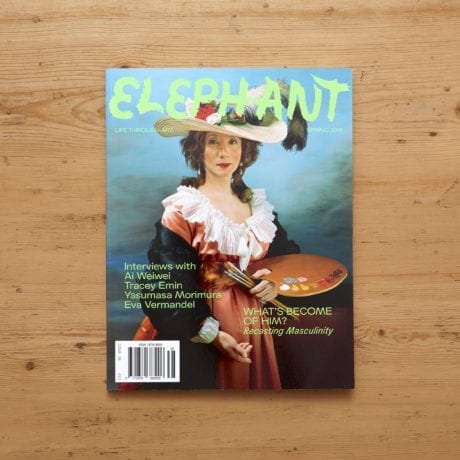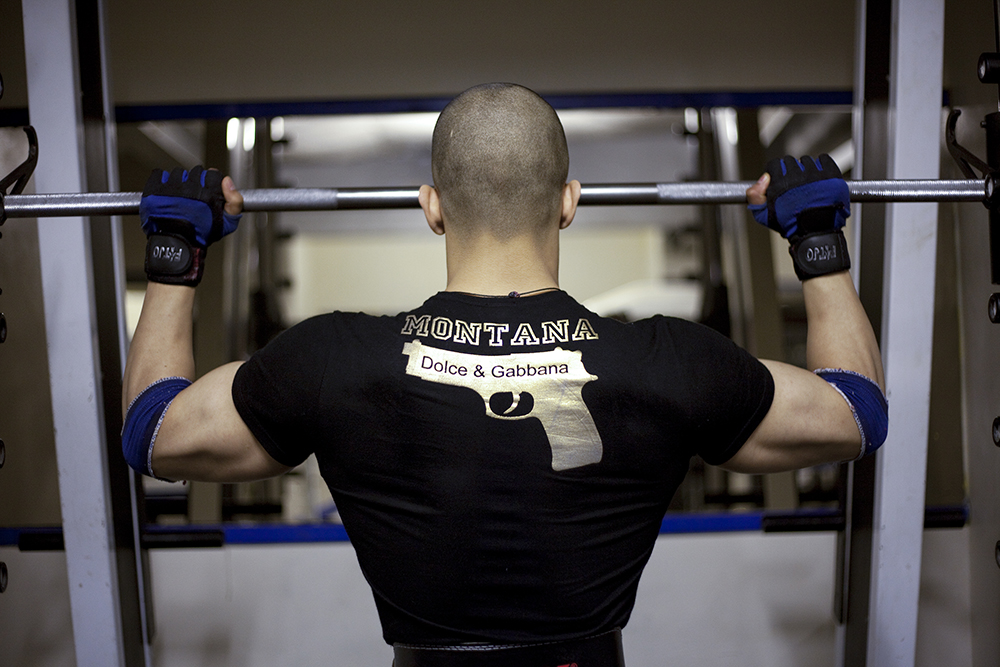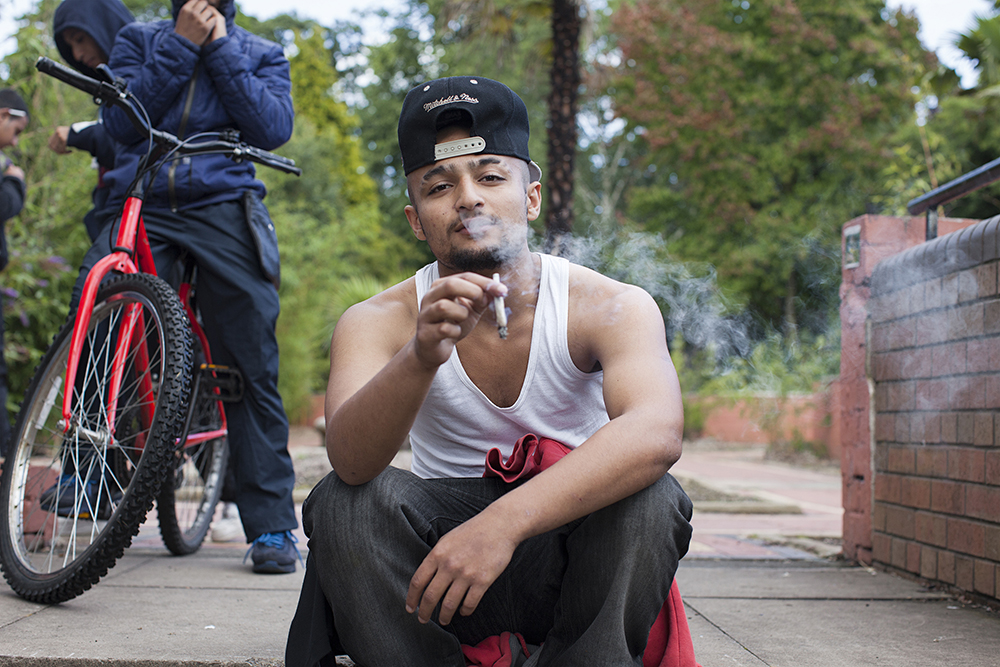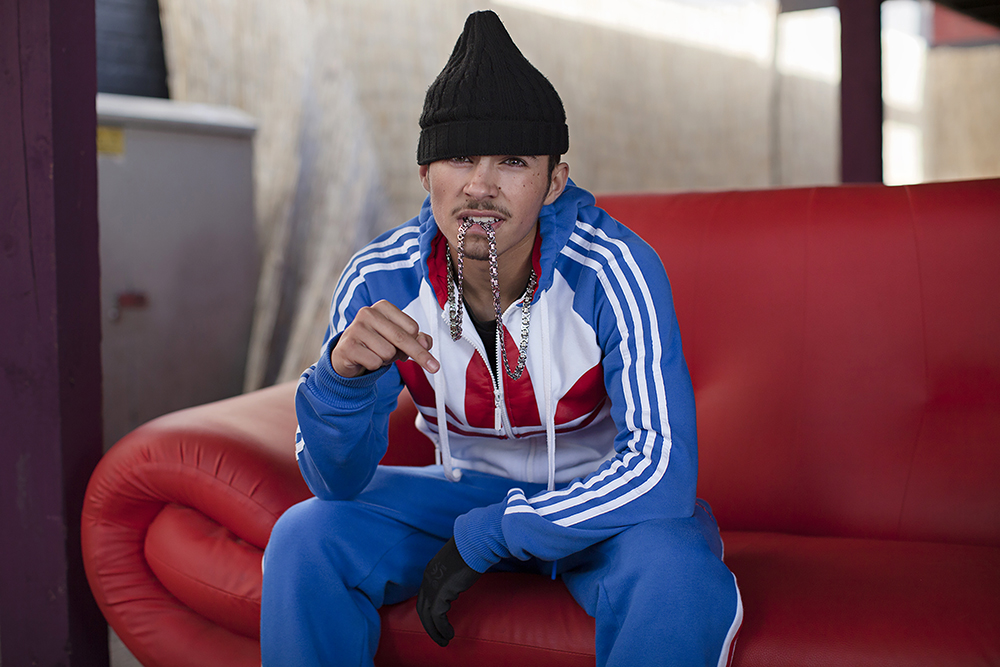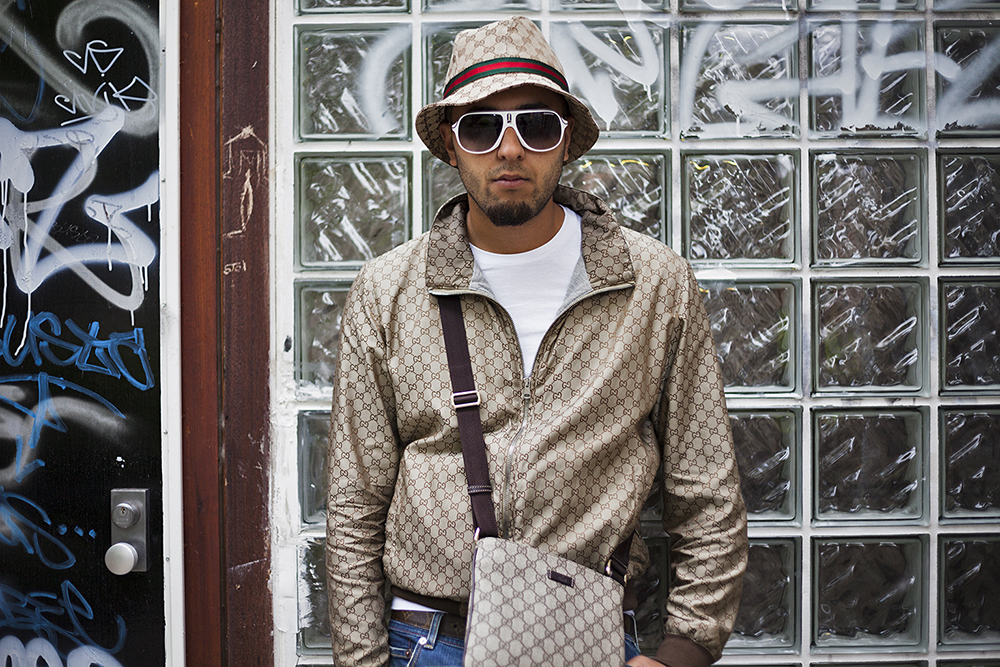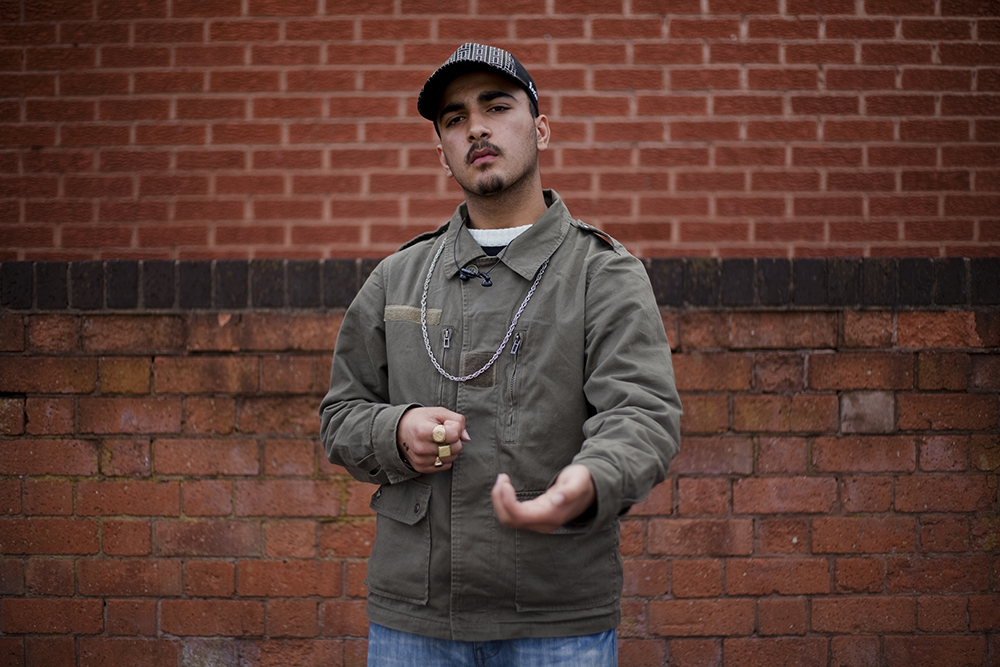
What is an authentic voice? Is it the uninhibited act of acquiring attractive influences, specifically for yourself? Or is it a more complex process of seeking empowerment? (That profound, psychological act of securing validity is increasingly necessary in an ever changing, complex world of identity politics.) Having walked the streets over the years, taking portraits of the British Muslim community, I would say it is a combination of both—and everything in between. Sitting at the very epicentre of this complex notion of identity are the young men whose search for an authentic voice means fighting against the stereotypical image perpetrated by mainstream media. In order to counter conventional narratives, my work
tries to capture the delicate nuances of these men and their internal conflict, as they grapple with concepts of sexuality, social class, cultural ties and religion, to determine their own authenticity.
- (Left) Muscles, Montana and Gold Gun; (right) Eyebrow Tracks, White Vest and Baseball Cap
This fresh-faced generation of British young men has been exposed to two extremes, the familial home—a powerhouse of traditionalism—and the West. Capitalism does what it does best, while growing up it tugged at these men offering them a certain lifestyle and a chance to quite literally buy into every aspect of Western life, be it clothes, cars, music, fitness, relationships even. Their community patiently tugged too. Amid the angst of trying to define who they were, what emerged entirely inadvertently was a fusion of conflicting influences. The product is a fluid urban hybridity.
“I strive to show how these men, with all the energy of youth, emotionally wrestle to establish a sense of inner self”
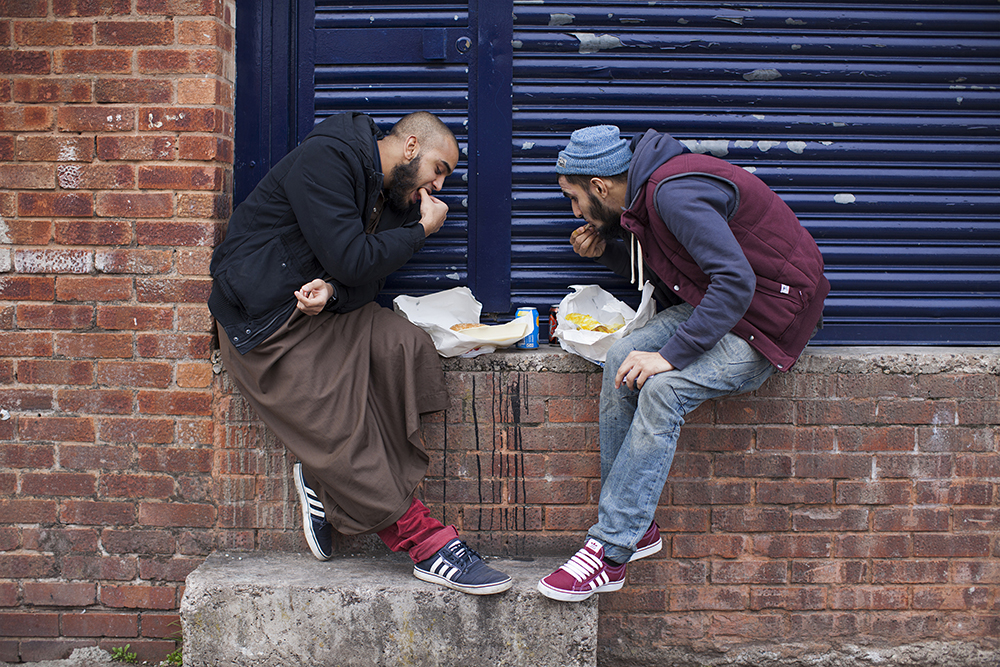
A visual analysis of this hybridity, the young men’s authenticity, lies at the very heart of my work. I strive to show how these men, with all the energy of youth, emotionally wrestle to establish a sense of inner self amid the imposition of wildly conflicting influences, above all, the West’s increasingly nuanced characteristics of masculinity. The images wrestle with the varied concepts of contemporary masculinity to answer the maxim, What does it mean to be a man?, whilst also bringing into sharp focus the implicit human need for us all to belong to a tribe or gang. In this sense, it has been a perfect vehicle through which these men can explore their identity.
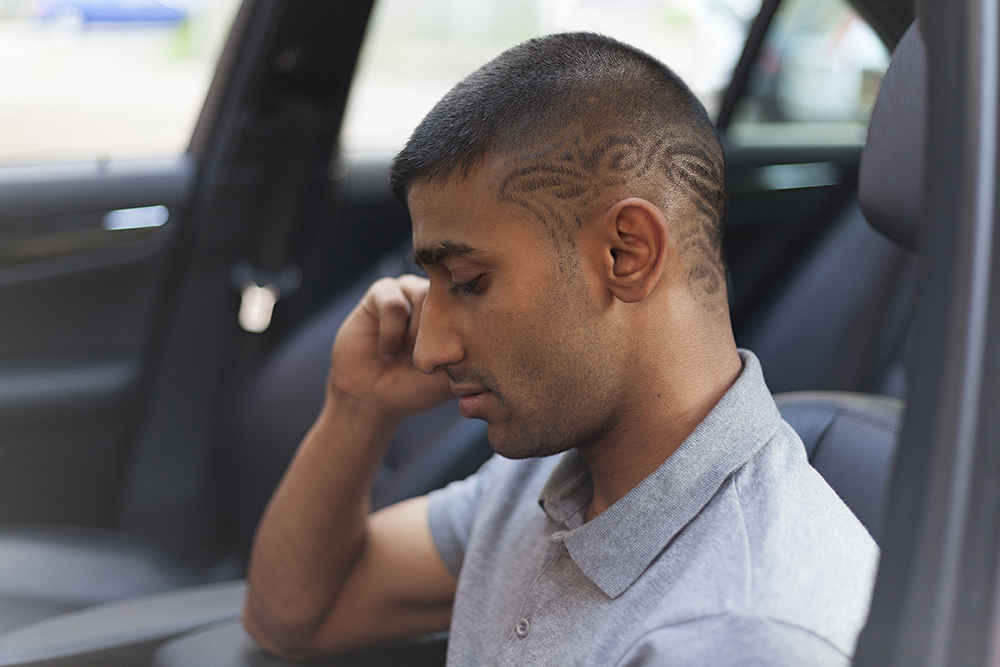
Some of my portraits resolutely symbolize the hybridity of East and West, coupling an obvious concern for material goods with unembellished traditional dress, suggesting that political and religious affiliations are pointedly reserved. Some of the men in my images are influenced by the culture of another suppressed group, black communities in America. The overwhelming appeal of this culture lies in its emergence as a direct consequence of racial suppression and its existence as distinctly anti-establishment. Certain portraits act as visual odes to this seductive urban movement, revealing the essence of overt masculinity and resistance as the sitters balance ostentatious assertiveness with unequivocal poise. Interconnected with this determination to authentically assume black culture, is the emergence of the “metrosexual” man. Meticulously groomed, often with plucked eyebrows, immaculate hairstyles and sophisticated dress sense, this very particular aspect of modern masculinity is pertinently combined with unadulterated extravagance, the great bastion of capitalism.
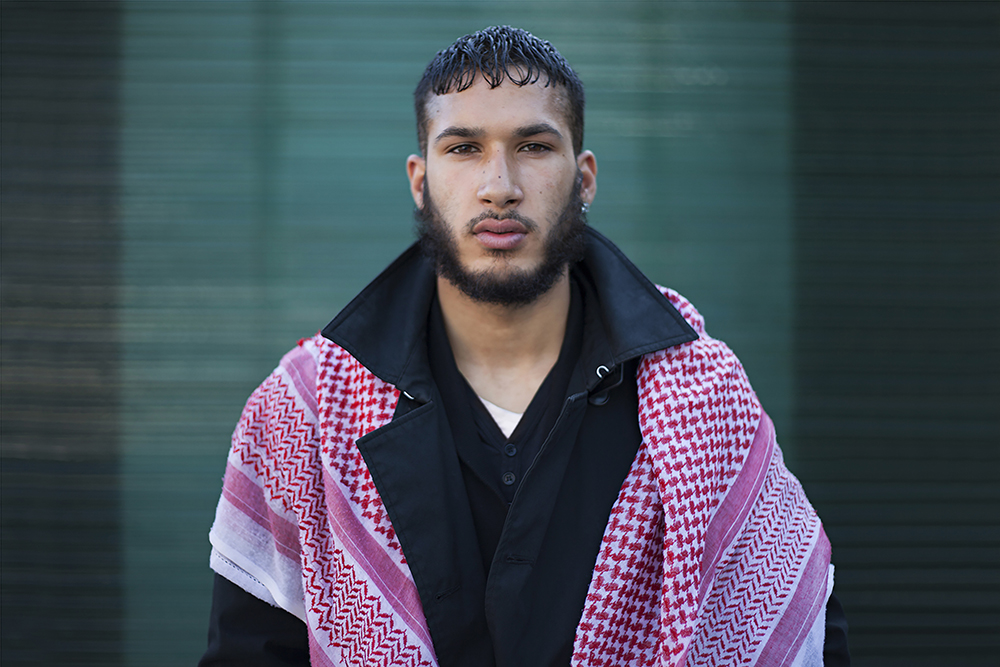
“I would argue that these men’s authenticity lies in their ability to have merged the incompatible into an identity that they can own”
Any visible association with these men’s faith is notably absent, indeed they could easily be considered advocates for the values and cherished freedoms upheld by the West, yet these men will tell you in a heartbeat their loyalty is to Allah. Predictably perhaps, as one of the most elementary characterizations of Western masculinity, bodybuilding has been keenly adopted by these young British men. This very conventional notion of masculinity metaphorically defines efforts taken by the community as they strive to overcome intimidation by a mistrustful society, and more generally, Western male redundancy. Yet despite the general acquisition of Western masculinity by young Muslim men, they still maintain a regard for the traditional notions of manhood held by their families, where male seniority and wisdom sits at the pinnacle of society’s social pyramid.
- (Left) Black hat, Black Glove and Bling; (right) Gucci Jacket, Hat and Bag
I would argue that these men’s authenticity lies in their ability to have merged the incompatible into an identity that they can own. It’s been borne out of the very worst acts of human nature—segregation, poverty, victimization. Yet this brave new hybridity is surely the future, and reminds me of the work of Gentile Bellini, the fifteenth-century Italian Renaissance artist. While the complex concept of Orientalism undoubtedly has its roots here, the Renaissance is now accepted to be the bridge between the Middle Ages and the Modern World and a period of considerable cultural interaction between East and West. Bellini was sent by the Venetian Senate as a peace offering to the court of the Ottoman Sultan, Mehmed II in 1479, after the end of the first Ottoman-Venetian War. Returning three years later, Bellini’s work relayed how his inherent practice of Western painting was now deeply imbued with a sense of the East, it proudly stood, authentic in its difference to the practices of his contemporaries. It’s a lovely note on which to end, the painter who was designated a peace offering, would ultimately be known for his combination of cultural voices. I’d like to think that the authentic, hybrid voice of the younger Muslim generation of today might also act as a tonic between extremes, forging tolerance and understanding.
You can read more about Mahtab Hussain in the current issue of Elephant magazine
BUY ISSUE 38